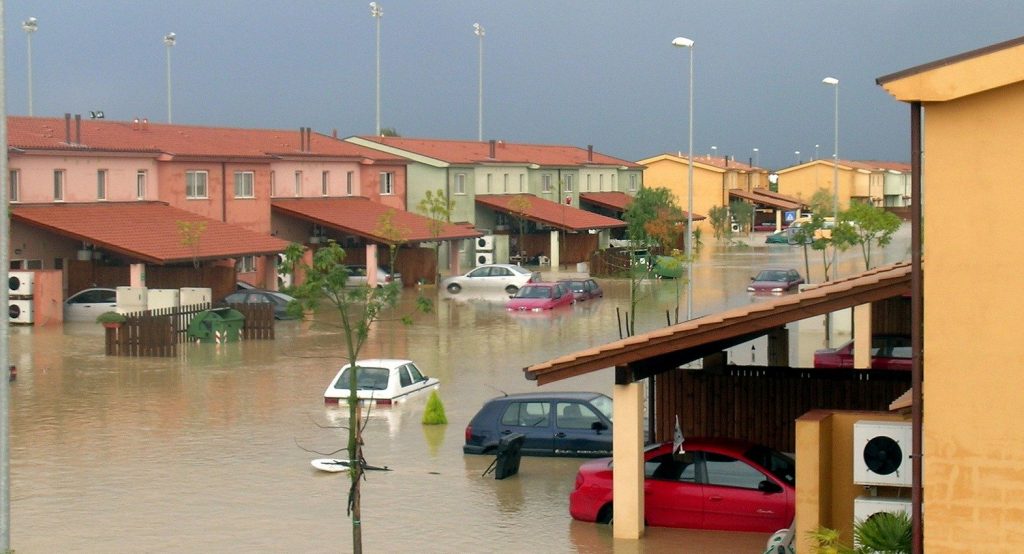What would you do if you could not go to the grocery store for a month? What if there is a fire that melts your roads, or heavy rains wash your roads out? What about surviving a rampant viral outbreak, or when a hostile nation finally hacks into our electrical grid? Could you and your family survive? Masks help in all disasters, and we’ll outline how to be prepared and have masks on hand to help save your life.
My name is Marshall, amd I’m so paranoid about fires, that some of my friends call me “Fire Marshall Bill” (One of Jim Carrey’s characters when he was on In Living Color). Ha, ha, very funny. Sure, it’s all fun and games until one of your tipsy bros catches the campsite on fire, and then they are all glad that they had the “worry wart” with the fire extinguisher with them!
A Mask Will Help You Survive a Wildfire
Wildfires can destroy homes and kill people, pets and livestock. Wildfires can:

- Be ignited by lightning, vehicle spark, cigarette butts, fireworks or campfires
- Start anytime, but more often during periods of low rain and high winds
- Destroy roads and cloud the air, interrupting land and air transportation
- Create erosion which leads to flooding in later months
- Cost local and the federal government tens of billions of dollars annually
When Do You Need to Use a Mask In a Fire?
If a fire is on the way but you have not yet been told to evacuate:
Gather up emergency supplies. Put on an N95 respirator mask that can filter out smoke and debris particles from the air. Close all doors and windows. Set up a portable air cleaner to keep indoor pollution levels low when smoky conditions exist.
If you see fire approaching your neighborhood or have been told to evacuate:
Leave belongings behind, gather only urgent medicines, ID’s, children, elderly and pets and evacuate immediately! Make sure everyone is wearing an N95 mask.
If you realize a fire is active in your home:
As fast as you are able, get children, elderly and pets out, immediately. You won’t have time to put on a mask, but remember: fire is extremely hot. A fire can make a room 100 degrees at floor level and can be 600 degrees at the ceiling. Inhaling fire-hot air will burn your lungs. If you can, crawl under smoke on your way to the exit.
After a fire in your area:
Do not return until authorities say it is safe. Avoid ash, smoldering trees, and report live embers. Wear a an N95 respirator mask. If water is available, it is best to wet down debris to reduce the dust particles you breathe.
Web Info Life gets commissions for purchases made through links in this post.
Have a Fire Escape Plan
With fire, every second is precious. A pre-planned escape plan will help you and your family and pets get out of the fire zone and to safety. Having a mask on can help save your life, if you can grab it fast enough. Keep masks and flashlights in a nightstand next to each bed to help you save precious seconds and save lives.
Be smart and be safe. It’s not hard, just click here for a free printable “Fire Escape Plan” template from The National Fire Protection Association (NFPA). This will help you to create an escape plan in case your home catches fire. After you develop an escape plan, practice using it at least once a year.
A Mask Will Help You Survive After A Flood

Do you need to return to a flooded home? Be wary! If a home has been flooded, it only takes 24-48 hours for it to have mold. Not all mold can be seen or smelled when it is on furniture, drapes, clothing, or drywall. Post-flood mold frequently hides under and behind items such as dressers, carpet and rugs, and couch cushions.
Breathing in mold can cause serious health problems. Mold can affect your lungs and throat with a stuffy nose or sore throat, wheezing or coughing. Folks with allergies or asthma may have extreme reactions. If you have a respiratory condition like asthma or COPD or a weakened immune system… stay away from moldy spaces. If you have healthy lungs, you need to protect them and wear an N95 rated mask.
Be Prepared for a Pandemic, Fire, Flood or Earthquake
It is “preparedness” and not “panic,” to keep a three to six week’s supply of canned goods, pet food, soap, water, critical medications, and masks. Masks can help in almost any disaster. Being prepared for any kind of emergency is just common sense. You never know when the next disease outbreak will loom on the horizon, just as you cannot predict severe weather and similar natural and human-made disasters.
Don’t let anyone sway you from making smart decisions to protect you and your family. “Preparedness” is not “panic!” The time to get prepared is now.
One of the better books I’ve read on disaster and pandemic preparedness is the “SEAL Survival Guide: A Navy SEAL’s Secrets to Surviving Any Disaster.” While it addresses some extreme situations such as “how to disarm a hand grenade,” the author focuses on more likely real-lie scenarios. Getting stuck in the desert, falling through ice, and surviving dog bites and auto accidents are all covered. One short but key point from the book is “Never Hesitate to Ask Questions That Could Save Your Life.”
The main takeaway from this great book is that there are:
3 Key Things To Stockpile For Extended Home Stay
- FOOD: Keep enough food on hand for the whole family to eat three meals a day. Nothing gets wasted if you keep extra on hand of items you normally buy. Simple things like peanut butter and jelly, tuna, soup, and canned fruit and vegetables. If you’re on a strict budget, peanut butter is one of the most affordable things to keep on hand, and is easy to eat if the power or water is off. Have one gallon of water per person, per day, on hand for 7-30 days. (We won’t run out of water in a pandemic, but this is a frequent problem for weather disasters.)
- MEDICINE: Have 30-90 days of any medications you need on hand. The more critical medications are to your survival, the longer supply you should keep on hand. (Don’t forget pet meds). It would also be a good idea to have aspirin, acetaminophen, bandaids, gauze and cough syrup.
- GERM PROTECTION: Make sure you have one box of latex gloves, a stack of Cloth and N95 masks, bleach, rubbing alcohol and soap. You do not want to get sick in the middle of a disaster so keep your place clean after disasters and in a pandemic.
Leading Experts Agree: Pandemic Preparedness is Not Panic
Feeling skeptical about all this preparedness stuff? Don’t!
Wildfires and floods are increasing. We are certain to have more viral outbreaks. Back in March of 2020 when COVID-19 started spreading, Dr. Nancy Messonnier, director of the CDC’s National Center for Immunization and Respiratory Diseases said:
“People over 60 and anyone with chronic medical conditions should buckle down for a lengthy stay home.“
That mens you need to be ready. Once the you-know-what hits the fan, it’s too late. Be ready for the next pandemic or weather disaster. Learn from what we learned in 2020. It’s not over reacting to “hope for the best but be ready for the worst.”
